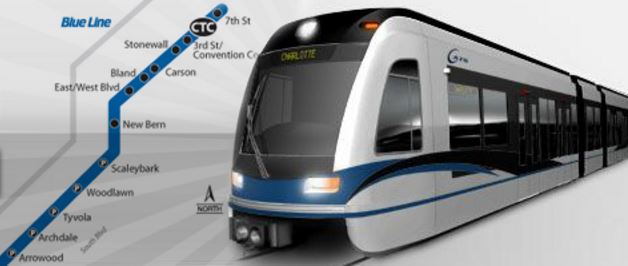The 10-year anniversary of the opening of the 10-mile Lynx Blue Line–connecting uptown Charlotte, North Carolina to Pineville–was celebrated this year.
The line spurred billions of dollars in redevelopment, transforming the warehouse-oriented South End into a thriving urban neighborhood. Light rail has also ignited the South End’s office market, which was almost non-existent prior to the Blue Line’s arrival.
While the growth and momentum is positive overall, it has created housing affordability problems that city leaders and planners hope won’t be repeated when the 9.3-mile Blue Line extension opens in Spring of 2018.
The Blue Line exceeded ridership expectations from the moment it opened, thanks in part to the economic downtown and skyrocketing gasoline prices a decade ago.
The Blue Line’s success has led to additional proposals for light-rail projects, such as a 13.5-mile Silver Line along Monroe Road and Independence Boulevard, a 30-mile commuter Red Line to Mooresville, and a line to Charlotte Douglas International Airport. The three projects together would cost about $6 billion.
The extension is expected to prove popular with University of North Carolina – Charlotte students, of which there are nearly 30,000. Darlene Heater, executive director of University City Partners, said the light rail coming to the area is a “tremendous opportunity” for both students and for uptown.
The biggest problem, common in many US cities, is that weak public leadership has led to a housing affordability crisis, as transit-oriented developers focus almost exclusively on the upper end of the market.
See full Charlotte Business Journal article by Ashley Fahey.

